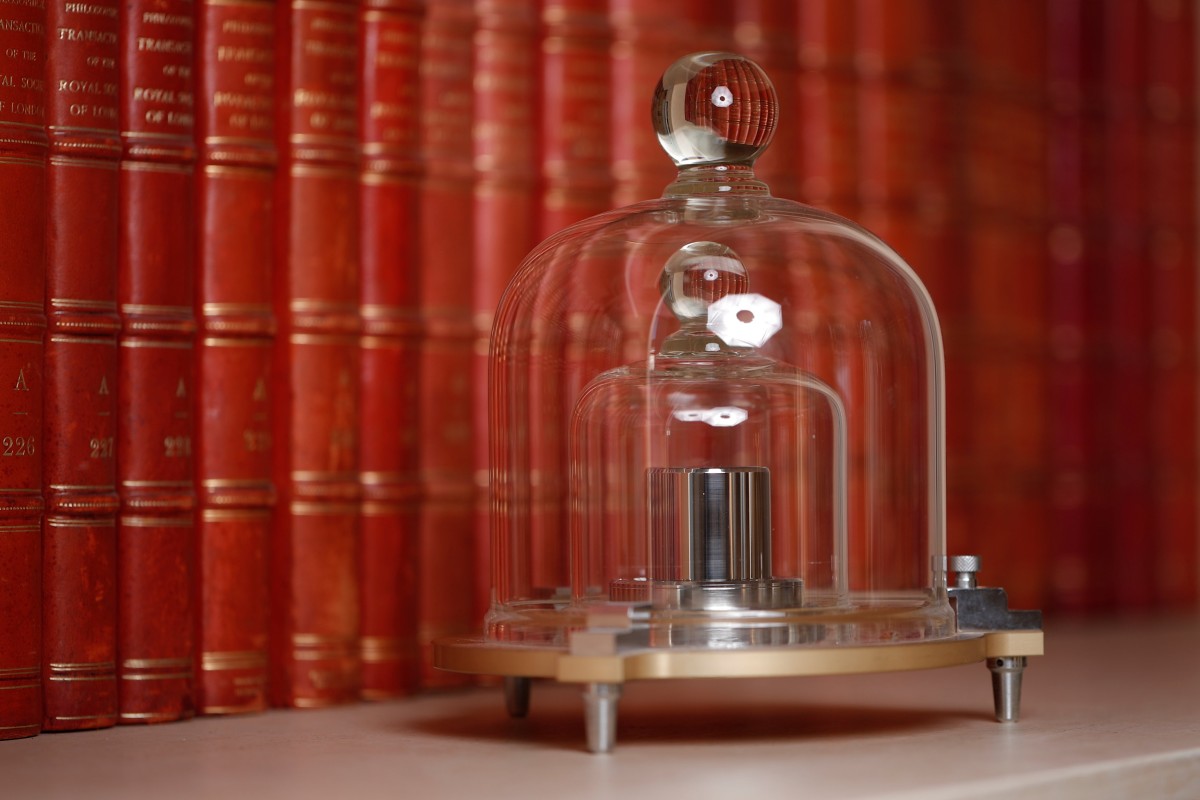
The definition of a kilogram is about to change; what do the public need to know?
Scientists in Paris are expected to approve plans to use a new definition of a kilogram based on Planck's constant
 The International Prototype Kilogram will soon be replaced by a new definition of the kilogram based on constants of the universe.
The International Prototype Kilogram will soon be replaced by a new definition of the kilogram based on constants of the universe. What you need to know:
The kilogram is getting an update.
No, your bathroom scales won’t suddenly become kinder and a kilo of fruit will still weigh a kilo. But the way scientists define the exact mass of a kilogram is about to change.
Until now, its mass has been defined by the granddaddy of all kilos: a golf ball-sized metal cylinder locked in a vault in France. For more than a century, it has been the one true kilogram upon which all others were based.
No longer.
The Standards and Calibration Laboratory of Hong Kong gives us a class in mass
Gathering in Versailles, west of Paris, governments are expected on Friday to approve plans to instead use a scientific formulation to define the exact mass of a kilo. The change is expected to have practical applications in industries and sciences that require ultra-precise measurements of mass.
And it will mean redundancy for the so-called Grand K, the kilo that has towered above them all since 1889.
Made of a corrosion-resistant alloy of 90 percent platinum and 10 percent iridium, the international prototype kilo has rarely seen the light of day. Yet its role has been crucial, as the foundation for the globally accepted system for measuring mass upon which things like international trade depend.
Three different keys, kept in separate locations, are required to unlock the vault where the Grand K and six official copies - collectively known as “the heir and the spares” - are entombed together under glass bell-jars at the International Bureau of Weights and Measures, in Sevres on the western outskirts of Paris.
Founded by 17 nations in 1875 and known by its French initials, the BIPM is the guardian of the seven main units humanity uses to measure its world: the metre for length, the kilogram for mass, the second for time, the ampere for electric current, the kelvin for temperature, the mole for the amount of a substance and the candela for luminous intensity.
Of the seven, the kilo is the last still based on a physical artefact, the Grand K. The metre, for example, used to be a metre-long metal bar but is now defined as the length that light travels in a vacuum in 1/299,792,458th of a second.
SCMP 115th Anniversary x Young Post: Throwback edition - Science & Technology
The metal kilo is being replaced by a definition based on Planck’s constant, which is part of one of the most celebrated equations in physics but also difficult to explain. Suffice to say that the update should, in time, spare nations the need to occasionally send their kilos back to Sevres for calibration against the Grand K. Scientists instead should be able to accurately calculate an exact kilo, without having to measure one precious lump of metal against another.
The change will have applications in computing, manufacturing, pharmaceuticals, the study of climate change and other sciences where precise measurements are required.
What does this mean for the general public?
Here in Hong Kong, the keepers of measurement are metrologists at the Standards and Calibration Laboratory (SCL) of the Innovation and Technology Commission (ITC). And like other nations, they have a copy of the International Prototype Kilogram (IPK), which forms the globally accepted system for measuring mass. Copy number 75 has been in the care of the lab since 1993 when it was first delivered to the region.
The lab is studying plans to follow the new international recommendations for realisation of the revised definition of “kilogram”, choosing from new equipment called Kibble balances or Avogadro Spheres to establish a new primary measurement standard.
But this will not matter much to the average citizen as an ITC spokeswoman explains. “In general, there will be no effect on the mass standards in Hong Kong. The mass value of the mass standards will remain unchanged after the redefinition of the kilogram. The general public will see no change after the redefinition of kilogram.”
What this change really matters to are high end users of measurements such as for scientific research purposes. “However, the measurement uncertainties of the mass standards will be slightly larger than that before. Only those high echelon laboratories such as the SCL will review and revise, if necessary, the measurement uncertainties of their mass standards.” the spokeswoman said.
